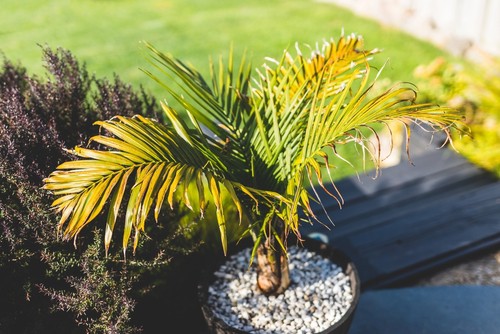Majesty palms (Ravenea rivularis) are a popular indoor plant that can add a tropical touch to any space. However, these plants can be quite finicky and may start to show signs of distress if not given the proper care.
One of the most common issues is majesty palm plant dying unexpectedly. If you are a majesty palm owner, it is important to understand the signs of a dying plant and take steps to prevent it from happening.
Signs of a dying majesty palm can include yellowing or browning leaves, wilting fronds, and stunted growth. These symptoms can be caused by a variety of factors, including overwatering, underwatering, poor soil quality, lack of light, and pest infestations.
If you notice any of these signs, it is crucial to act quickly in order to save your plant.
To prevent your majesty palm from dying, it is important to understand its specific care requirements. This includes providing the right amount of water, light, and nutrients, as well as ensuring that the plant is in a suitable pot and soil. With proper care, your majesty palm can thrive for many years to come.
Key Takeaways
- Signs of a dying majesty palm include yellowing or browning leaves, wilting fronds, and stunted growth.
- Common reasons for majesty palm dying include overwatering, underwatering, poor soil quality, lack of light, and pest infestations.
- To prevent majesty palm dying, it is important to provide the right amount of water, light, and nutrients, as well as ensuring that the plant is in a suitable pot and soil.
Check out these other popular posts in this category:
Understanding Majesty Palm
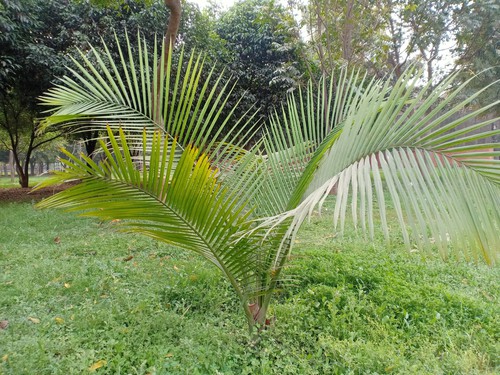
Majesty palm, also known as majestic palm or Ravenea rivularis, is a tropical plant that is native to Madagascar. It is a popular indoor plant choice due to its lush foliage and ability to thrive in low light conditions. Majesty palms are also commonly used in outdoor landscaping in tropical and subtropical regions.
Majesty palms are characterized by their long, feathery fronds that grow in a symmetrical pattern from a single trunk. The fronds can grow up to 8 feet long, making the plant an impressive addition to any space.
In terms of care, majesty palms prefer bright, indirect light. They can tolerate some direct sunlight, but too much can cause their leaves to burn. Indoors, they should be placed near a window that receives bright, indirect sunlight. Outdoors, they should be planted in a location that receives partial shade.
Majesty palms require consistently moist soil, but they do not tolerate standing water. Overwatering can cause root rot and other fungal diseases, while underwatering can cause the leaves to turn brown and crispy. It is important to strike a balance between keeping the soil moist and allowing it to dry out slightly between waterings.
In terms of temperature, majesty palms prefer warm, humid environments. They do not tolerate cold temperatures or drafts well and should be kept in a room with a temperature between 60-80°F. To increase humidity, the plant can be misted regularly or placed on a tray of pebbles filled with water.
Signs of a Dying Majesty Palm
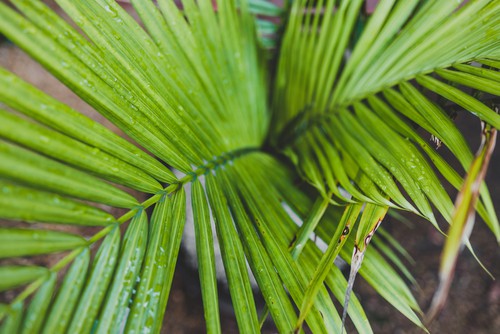
Majesty palms are tropical plants that can add a touch of elegance to any indoor or outdoor space. However, these plants can be sensitive and require proper care to thrive. If you notice that your Majesty palm is looking sickly or showing signs of decline, it might be dying.
Here are some common signs of a dying Majesty palm:
- Yellowing or browning of leaves: A Majesty palm’s leaves should be green and healthy-looking. If you notice that the leaves are turning yellow or brown, it could be a sign that the plant is not getting enough water or nutrients.
- Leaf tips turning brown: If the tips of the leaves are turning brown, it could be a sign of low humidity or over-fertilization.
- Brown spots on leaves: Brown spots on the leaves could be a sign of a fungal infection or insect infestation.
- Trunk rot: If the trunk of the plant feels mushy or shows signs of decay, it could be a sign of trunk rot. This can be caused by overwatering or poor drainage.
- Drooping or wilting: A Majesty palm that is drooping or wilting could be a sign of underwatering or overwatering.
If you notice any of these signs, it is important to take action to try and save your Majesty palm from dying. In some cases, the plant may be too far gone and cannot be saved. However, if caught early enough, you may be able to revive your plant and restore it to health.
It is important to note that some of these signs may also be indicative of other health problems, such as nutrient deficiencies or pest infestations. Therefore, it is important to carefully examine your plant and identify any other symptoms that may be present.
Majesty Palm Plant Dying – 6 Common Problems
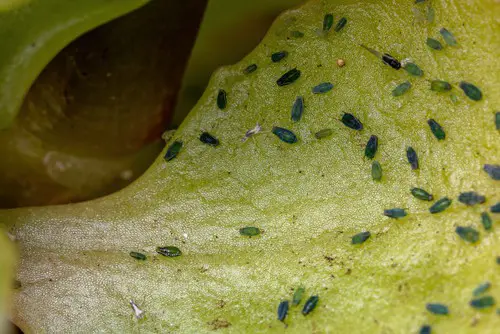
Majesty palm is a popular indoor plant that can add a tropical vibe to any home. However, it can be frustrating when your majesty palm starts to show signs of distress and eventually dies. There are several reasons why your majesty palm might be dying. Here are some of the most common reasons:
1. Overwatering
Overwatering is one of the most common reasons why majesty palms die. Majesty palms prefer moist but well-draining soil. When the soil is too wet, the roots can rot, which can lead to the death of the plant. Signs of overwatering include yellowing leaves, wilting, and root rot.
2. Underwatering
Underwatering is another common reason why majesty palms die. When the soil is too dry, the leaves will start to turn brown and crispy. Majesty palms need regular watering, but it’s important not to overdo it. Water the plant when the top inch of soil is dry to the touch.
3. Low Humidity
Majesty palms are native to humid climates, so they need a lot of moisture in the air to thrive. If the air in your home is too dry, the leaves of your majesty palm will start to turn brown and crispy. To increase the humidity around your plant, you can use a humidifier or place a tray of water near the plant.
4. Temperature
Majesty palms prefer warm temperatures and can be sensitive to cold drafts. If your plant is near a window or door that is letting in cold air, it may start to show signs of distress. Keep your majesty palm away from cold drafts and maintain a temperature of at least 60°F.
5. Pest Infestation
Majesty palms can be susceptible to pest infestations, such as spider mites. These tiny pests can suck the sap from the leaves, causing them to turn yellow and fall off. If you suspect a pest infestation, isolate the plant and treat it with an appropriate insecticide.
6. Fungal Disease
Majesty palms can also be susceptible to fungal diseases, such as root rot. This can be caused by overwatering or poorly draining soil. Signs of root rot include yellowing leaves, wilting, and a foul odor. If you suspect root rot, remove the plant from the soil and trim away any affected roots. Repot the plant in fresh, well-draining soil.
Role of Water in Majesty Palm Care

Water is a crucial element in the care of a Majesty Palm. The plant requires consistent moisture to thrive, but overwatering or underwatering can lead to serious problems.
Majesty Palms need to be watered regularly, but the frequency of watering depends on the environment in which they are grown. The University of Minnesota Extension recommends watering the plant when the soil is dry to the touch, but not completely dried out.
It is important to avoid letting the soil dry out completely, as this can lead to leaf damage and stunted growth.
Overwatering can be just as harmful as underwatering. When the soil is consistently moist, the roots of the plant can become waterlogged and begin to rot. This can cause the leaves to turn yellow and fall off, and can even kill the plant.
To prevent overwatering, it is important to ensure that the pot has proper drainage. Majesty Palms should be planted in well-draining soil and placed in a pot with drainage holes. Excess water should be allowed to drain off after watering to prevent water from pooling in the bottom of the pot.
In addition to proper watering, humidity levels are also important for the health of a Majesty Palm. These plants thrive in a humid environment, and low humidity can cause the leaves to turn brown and dry out.
To increase humidity levels, the use of a humidifier or regular misting can be beneficial. Misting the leaves of the plant with water can help to increase humidity levels and keep the leaves from drying out. However, it is important not to mist the plant too often, as this can lead to excess moisture and cause problems with overwatering.
Importance of Soil and Pot for Majesty Palm

The soil and pot are crucial factors that determine the health and growth of a Majesty Palm. The right soil mix and pot can ensure that the plant has adequate nutrients, water, and air circulation, while the wrong ones can lead to root rot, stunted growth, and even death.
When it comes to soil, Majesty Palms prefer a rich, well-draining mix that retains moisture but doesn’t stay waterlogged. An acidic pH between 5.0 and 6.0 is ideal. A good soil mix for Majesty Palms is two parts sand, two parts peat moss, and one part loam.
Alternatively, a cactus soil mix with added peat moss can also work well. It’s important to use fresh soil when repotting the plant, as old soil can harbor pests and diseases.
The pot is equally important, as it affects the plant’s root growth and water retention. Majesty Palms prefer pots that are slightly larger than their root ball, with drainage holes at the bottom to prevent water from pooling.
The pot should be made of a porous material like clay or terracotta, which allows air and moisture to circulate. Plastic pots can also work, but they should have drainage holes and be elevated to allow excess water to drain.
When repotting a Majesty Palm, it’s important to choose a pot that’s only slightly larger than the plant’s current one. Repotting into a pot that’s too big can lead to overwatering and root rot.
The plant should be lifted gently from its current pot, and any dead or damaged roots should be trimmed before placing it in the new pot. The potting mix should be added around the root ball, and the soil should be gently pressed down to remove any air pockets.
Light and Temperature Requirements

Majesty palms require bright, indirect light to thrive. Direct sunlight can cause the leaves to turn yellow and dry out, while insufficient light can cause the plant to stretch out looking for more. A good rule of thumb is to provide four to six hours of indirect light per day.
Indoor majesty palms should be placed near a bright window that receives plenty of natural light but does not expose the plant to direct sunlight. Outdoor majesty palms should be placed in a shaded area that receives plenty of bright, indirect sunlight.
In addition to light, temperature is also an important factor in the health of a majesty palm. The plant prefers a temperature range of 60-85°F (15-29°C) and does not tolerate extreme temperature fluctuations well. Avoid placing the plant near drafty windows or in areas with high heat or air conditioning.
If the plant is not receiving enough light or is exposed to extreme temperatures, it may begin to show signs of stress such as wilting or yellowing leaves. Adjusting the plant’s location to provide more appropriate lighting and temperature conditions can help revive a dying majesty palm.
Nutrition and Fertilization
Majesty palms require proper nutrition and fertilization to stay healthy and prevent them from dying. Fertilizers provide essential nutrients that the plant needs to grow and thrive. These nutrients include nitrogen, phosphorus, potassium, iron, and magnesium.
Fertilizers come in different forms such as granular, liquid, and slow-release fertilizers. Granular fertilizers are easy to apply and last longer in the soil. Liquid fertilizers are quickly absorbed by the plant and provide faster results.
Slow-release fertilizers are designed to release nutrients slowly over time, providing a steady supply of nutrients to the plant.
When selecting a fertilizer, it is important to choose one that is specifically formulated for palm trees. Majesty palms require a balanced fertilizer with an NPK ratio of 8-2-12-4, which means it contains 8% nitrogen, 2% phosphorus, 12% potassium, and 4% magnesium.
Iron is another important nutrient that Majesty palms require. Iron deficiency can cause yellowing of the leaves, known as chlorosis. To prevent this, it is recommended to use a fertilizer that contains chelated iron.
Fertilizers should be applied during the growing season, which is from spring to fall. It is important to follow the manufacturer’s instructions on the label when applying fertilizers. Over-fertilization can cause damage to the plant, so it is important not to exceed the recommended dosage.
Pruning and Growth
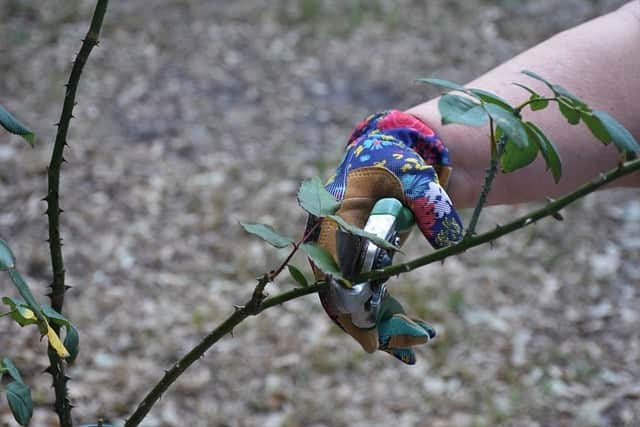
Majesty palms are slow-growing plants, which means they don’t require frequent pruning. However, pruning is still essential to keep the palm healthy and promote growth.
Pruning helps to remove dead fronds, which can be a breeding ground for pests and diseases. It also helps to promote new growth, which keeps the palm looking lush and healthy.
During the growing season, it’s important to monitor the palm’s growth and prune as needed. If the palm is producing buds, it’s a sign that it’s healthy and growing. Pruning during this time can help to encourage new growth and keep the palm looking its best.
When pruning, it’s essential to use sharp, clean tools to prevent damage to the palm. Remove any dead or yellowing fronds, making sure to cut as close to the trunk as possible. Avoid cutting healthy green fronds, as this can stunt the palm’s growth.
If the palm is dying or in poor health, pruning may not be enough to revive it. In this case, it’s essential to address any underlying issues, such as improper watering or lighting. Once these issues have been resolved, pruning can help to promote new growth and bring the palm back to health.
Preventing and Treating Diseases and Pests
Majesty palms are susceptible to several diseases and pests that can cause them to die. However, there are several measures that can be taken to prevent and treat these issues.
1. Diseases
Majesty palms can be affected by several fungal diseases such as trunk rot, leaf spot, and root rot. These diseases can cause yellowing and browning of leaves, stunted growth, and eventually death.
To prevent these diseases, it is important to avoid overwatering and ensure that the soil is well-draining. Additionally, any dead or diseased leaves should be promptly removed to prevent the spread of the disease.
If the palm is already infected with a fungal disease, it is important to treat it immediately. This can be done by using a fungicide that is specifically formulated for palm trees. It is important to follow the instructions on the fungicide label carefully to ensure effective treatment.
2. Pests
Majesty palms are also susceptible to pests such as spider mites and mealybugs. These pests can cause yellowing and browning of leaves, stunted growth, and eventually death.
To prevent these pests, it is important to keep the palm clean and dust-free. Additionally, any dead or diseased leaves should be promptly removed to prevent the spread of pests.
If the palm is already infested with pests, it is important to treat it immediately. This can be done by using a pesticide that is specifically formulated for palm trees. It is important to follow the instructions on the pesticide label carefully to ensure effective treatment.
3. Chemicals

When treating diseases and pests, it is important to use chemicals that are specifically formulated for palm trees. Using the wrong chemicals can cause more harm than good and can even kill the palm. It is important to follow the instructions on the chemical label carefully to ensure effective treatment.
Conclusion
By following the appropriate care guidelines, such as ensuring adequate watering, lighting, and humidity levels, Majesty Palms can remain healthy and vibrant.
It is essential to avoid overwatering, which can lead to root rot, and to provide the plant with the right amount of light, as too much or too little can cause damage. Additionally, maintaining proper humidity levels is crucial for the plant’s growth and overall health.
While Majesty Palms can be grown outdoors in warm, humid climates, they are commonly grown as indoor plants. Indoor Majesty Palms require consistent care, including regular pruning and fertilization. It is also crucial to keep an eye out for pests and diseases that can harm the plant.
Frequently Asked Questions
How do I know if my majesty palm is overwatered or underwatered?
Overwatering can cause the roots of a majesty palm to rot, while underwatering can cause the leaves to turn brown and dry out. A good way to tell if your majesty palm is overwatered is to check the soil for moisture.
If the soil is constantly wet or soggy, then it is likely that you are overwatering your plant. If the soil is dry and the leaves are brown and crispy, then your plant is likely underwatered.
What are some caommon problems that can cause a majesty palm to die?
Majesty palms are sensitive plants that can be affected by a number of different problems. Some common problems that can cause a majesty palm to die include overwatering, underwatering, poor soil quality, lack of sunlight, and pests such as spider mites and mealybugs.
What are the signs of trunk rot in a majesty palm?
Trunk rot is a serious problem that can cause a majesty palm to die. Signs of trunk rot include a soft, mushy trunk, discolored or wilted leaves, and a foul odor coming from the plant. If you suspect that your majesty palm has trunk rot, it is important to act quickly to save the plant.
What is the best way to care for a majesty palm plant outdoors?
Majesty palms thrive in warm, humid environments and require plenty of water and nutrients to grow properly. When planting a majesty palm outdoors, it is important to choose a location that receives plenty of indirect sunlight and is protected from strong winds.
The soil should be well-draining and rich in organic matter, and the plant should be watered regularly to keep the soil moist.
Can a majesty palm be saved if it is dying?
Yes, a majesty palm can be saved if it is dying, but it depends on the cause of the problem. If the plant is overwatered, it may be possible to save it by reducing the amount of water it receives and improving the drainage of the soil.
If the plant is underwatered, it may be possible to save it by watering it more frequently and providing it with nutrients.
What are some tips for pruning a majesty palm plant?
Majesty palms do not require extensive pruning, but it is important to remove any dead or damaged fronds to prevent the plant from becoming too top-heavy.
When pruning a majesty palm, it is important to use clean, sharp tools to avoid damaging the plant. It is also important to avoid cutting too close to the trunk, as this can cause damage to the plant.

Hey, I’m Lisa and I’ve been an avid gardener for over 30 years. I love writing, talking and living in the garden! Feel free to connect with me on my socials below

